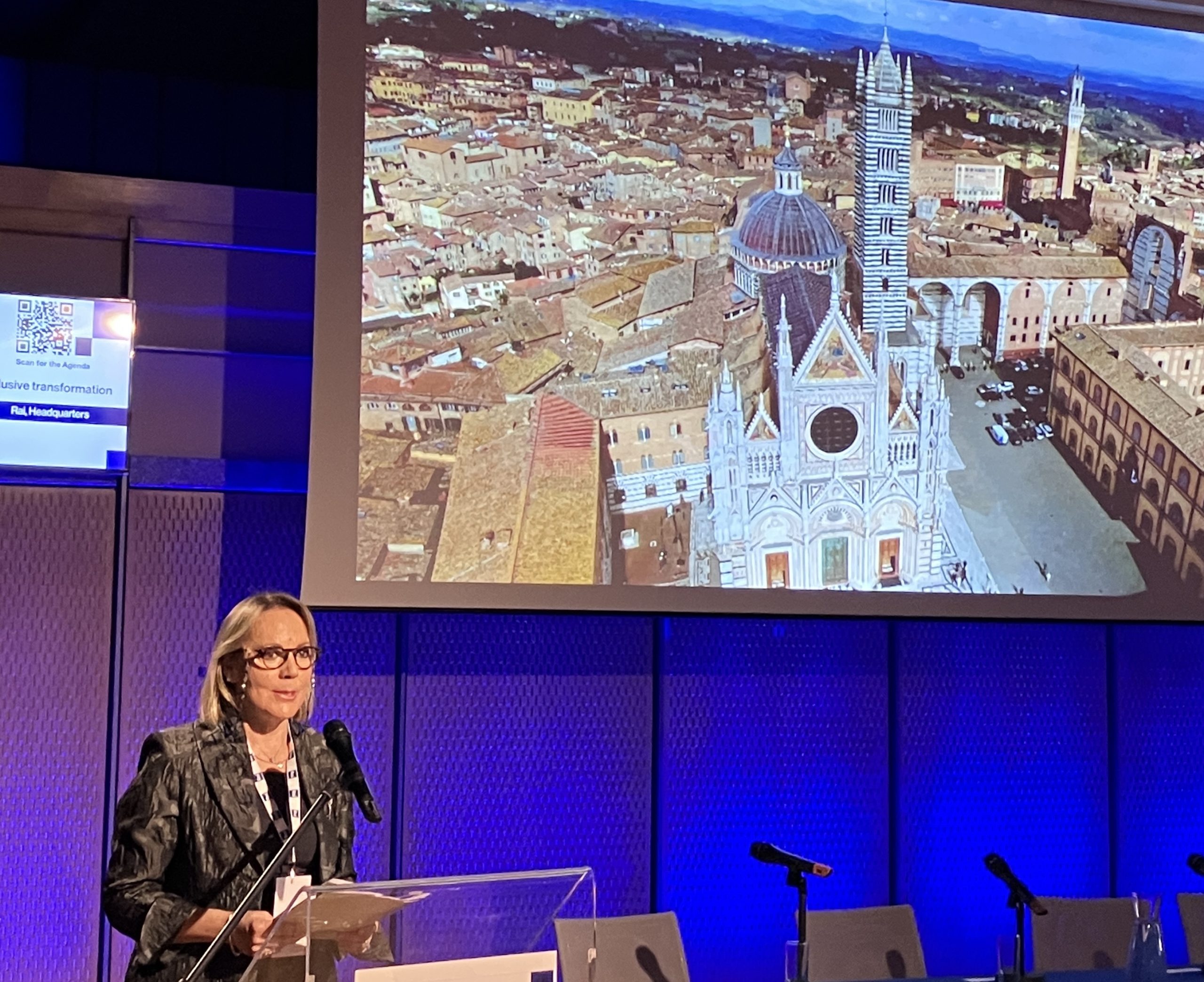The second session in today’s ABU-Rai Days conference was titled Showcasing a sustainable media industry and explored how some major broadcasters in Europe and Asia Pacific have taken up challenges of making their organisations and activities more sustainable.
The session was moderated by RAI International Relations and European Affairs Director, Simona Martorelli (pictured).
The first speaker, MediaCorp Singapore Head, Sustainability & Lead, Production Services, James Hollis, began in his role less than a year ago without a background in sustainability. He outlined how he brought a bottom-up approach to implementing a more sustainable company culture by involving 70 volunteer employees to help drive the change. This was made through what the broadcaster describes as a AAA framework: Awareness, Action and Ambition.
- AWARENESS: included having an understanding of business, regulatory, audience and employee expectations. The Awareness approach is driven from the bottom up. The broadcaster has also formed a sustainability council made up of heads of department so that the Content division has a commitment on sustainability.
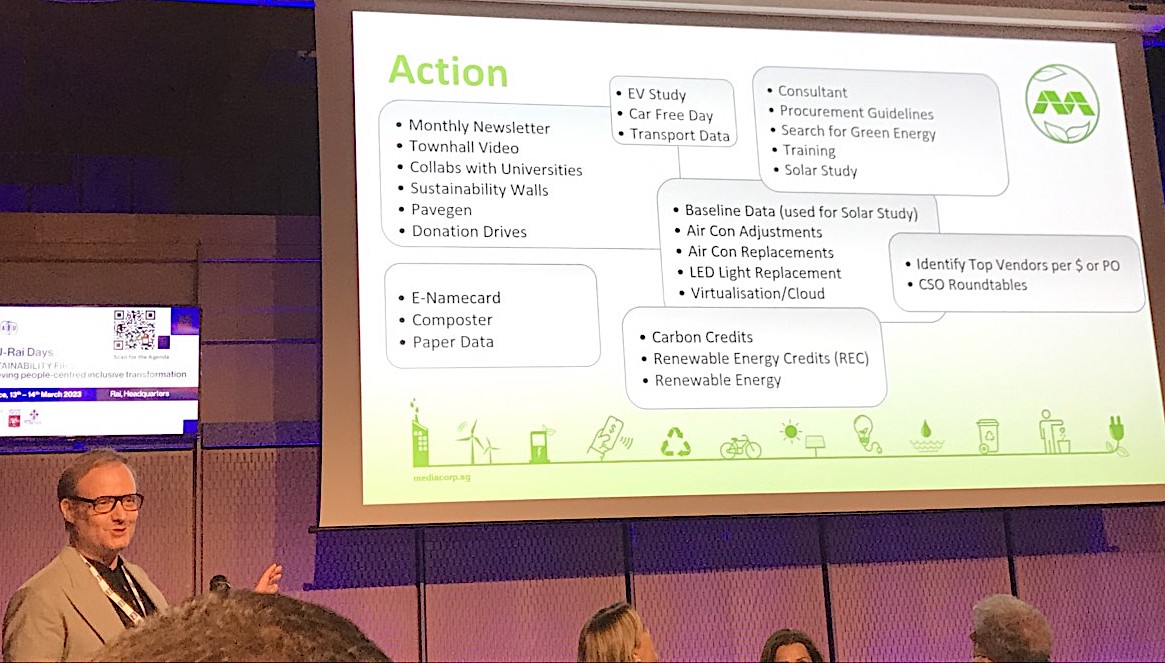
- ACTION: Hollis gave examples of new ways they are implementing more sustainable solutions such as solar energy to offset 6.5% of the energy consumed. Solar trees have been installed on the roof as a shared space that staff use (pictured below); virtualisation of operational servers reduces space and has less energy usage; green walls in the building make sustainability visible to staff, who can harvest the vegetables grown on the walls each week. Other initiatives include: monthly news letters, clothing drives for charity and quizzes to increase staff knowledge.
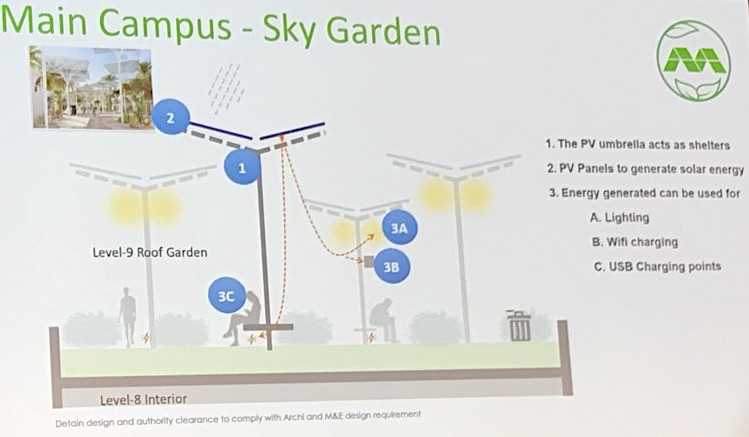
- AMBITION: Carbon neutral targets. Expert consultants used to help broadcasters achieve their aims, because sustainability is not a broadcaster’s core business.
RAI per la Sustainability ESG Director Roberto Natale, and Deputy Director, Micol Rigo explained the importance of having a top down approach to focus on the areas of Environment, Social and Governance.
The goal is for sustainability to become structural within RAI as part of redefining the role of Public Service Media. The formula to achieve this goal is content + dedicated governance +Ad-hoc Plan. An example of ESG in content is the television drama, A Place in the Sun, where one of the characters reminds the other to keep the heating temperature at home on 19 degrees.
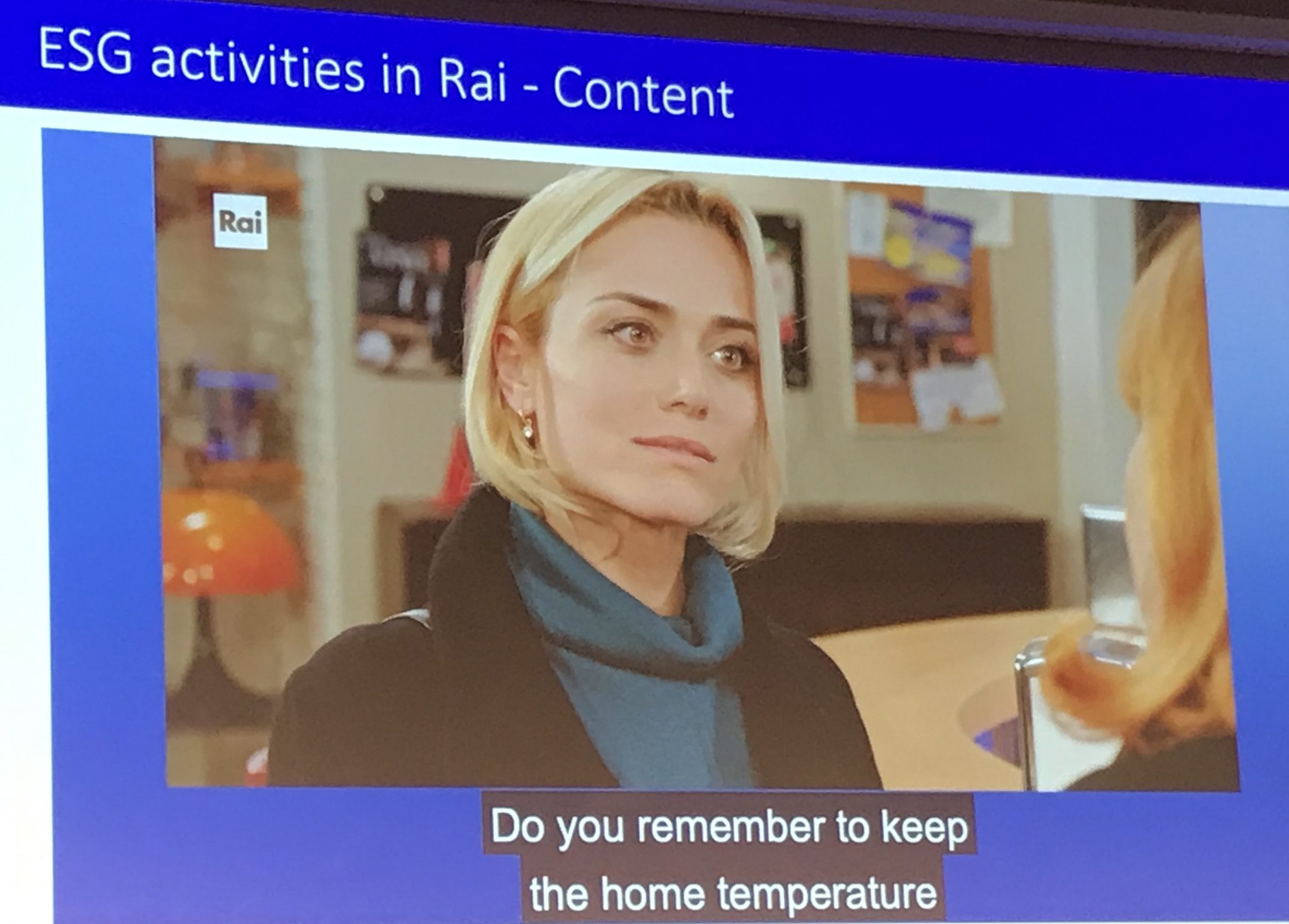
RAI’s focus on sustainability led to organisational change. The ESG activities and milestones are being tracked carefully within the organisation as change takes place.
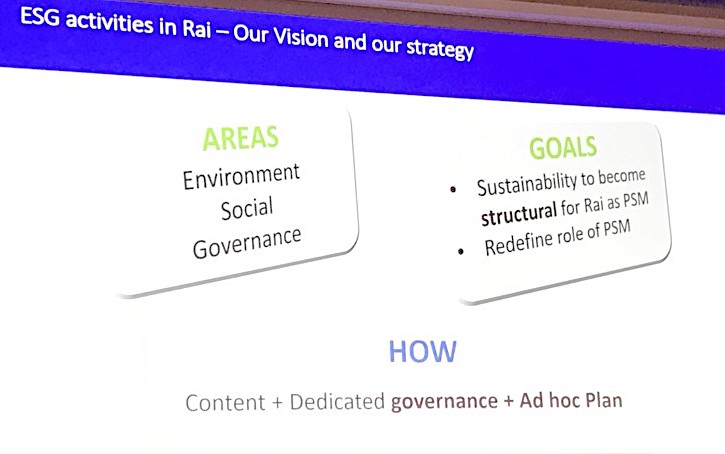

Accountability is evident in the plan below where the majority of the goals are achieved or in progress.

The learning from the experience is divided into checks and balances or strengths and challenges.
- Areas: Environment, Social (Campaigns), Governance
- Goals: Sustainability to become structural for RAI as PSM and to redefine the role of PSM
- How: content +Dedicated governance +AD hoc Plan
- Need to reach wider audience and enter the programs where viewers don’t expect to find sustainability content e.g. A place in the sun e.g. dialogue
- Vision and strategy: importance of setting goals and to measure our achievements; Nine social value are already at the core of our mission “a chance to build from where you are to make a cultural change by building our priorities, taking account of governance and what is financially possible. Importance of setting targets eg. How many more people do you wish to engage?
- Goals were prioritised and accountability achieved my measuring the outcomes.
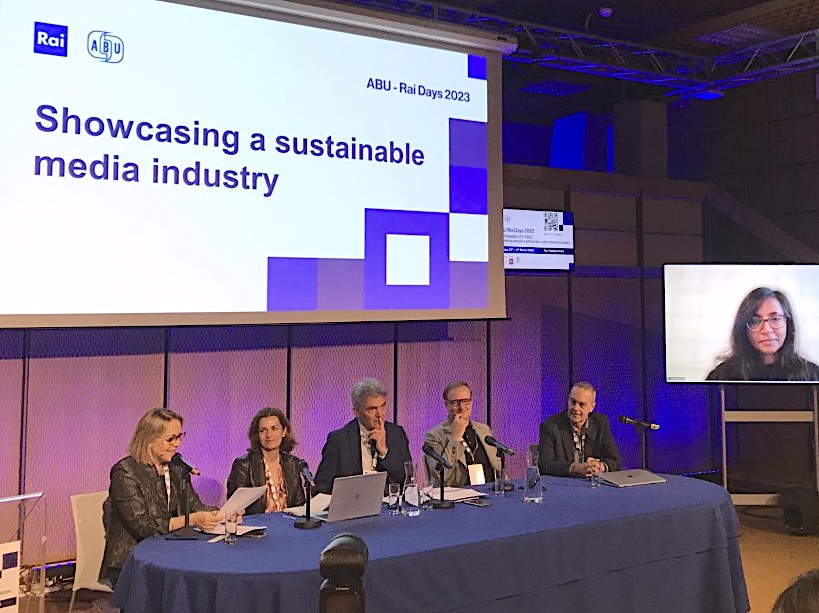
ABC Radio Sydney Manager, Steve Ahern is Chairman of the Green Ears project in Australia, which focuses on sustainability in the radio and audio industries. He outlined the commitment of all Australian audio broadcasters to support increased sustainable practices through this initiative.
- Radio and Audio are the most sustainable of the media industries compared with the tv/screen, outdoor advertising and film industries.
- The Green Ears project unites all sectors of audio broadcasting in Australia with the goal of improving sustainability, because audiences and advertisers are demanding accountability from their broadcasters.
- Transmissions is generally the largest contributor to emissions (Broadcast and Streaming) however Digital (DAB+) transmission significantly reduces power usage with its multiple shared services on one transmitter. The next largest contributors to emissions for broadcasters are usually communications (telcos, cloud computing) and buildings.

The EBU’s Sustainability Lead, Hemini Mehta focused on sustainability for Public Service Media, highlighting Organisational strategy, Carbon calculators, reporting, Buildings/ transport/ travel
- Green production initiatives use Carbon Calculators to identify Waste/ Travel/ and Energy usage.
- Responsible use of the Cloud is needed and there must be transparency using metrics so that cloud carbon emissions are captured right through the chain to give a real indication of whether cloud storage and distribution is really sustainable or is just transferring costs and responsibility to someone else down the chain.
- Sports and sustainability: working with sport federations and broadcasters and exploring how to make sports events in a greener way, as well as how to bring the audience on the journey.
- News about climate change, including how to inform the viewers but also to resonate with them.

